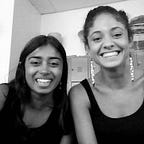Reminder: Representation Matters
After reading Weeding Out Racism’s Invisible Roots: Rethinking Children’s Classics | Opinion by Padma Venkatraman in the School Library Journal, I thought about book choices in classrooms and schools. I know most teachers right now are grappling with how and if they will be able to be with students in person this fall and of course, everyone’s safety and health is the most important thing. However, if you are like me, you are trying to plan and organize for what little we can control. One thing we can control is what books we choose to share with students.
Children receive so much information and so many ideas through their surroundings and exposure from a very young age. Racism and institutional exclusion through societal messaging starts so early. At school (and out in the world, in the media, and more), students are shown that certain voices are more important than others. They see only certain categories of people in positions of authority. While we might try to teach students that everyone is equal, the reality of society and the world around them sends a different message.
I’ve learned through experience that we cannot and do not always anticipate the messages that kids internalize.
A six year old girl once told my sister (who is a physician) that she didn’t know girls could be doctors until she met her. She had never expressed that sentiment out loud, so no one knew to tell her or show her female doctors. Another time, a child was reading a board book about the US presidents to me. The last page of the book is a mirror that says something about how YOU (the reader) could be the next president. She looked at me and said, “I can’t be president because I’m a girl.” The second to last page of the book depicted all 44 presidents (this was a few years ago), who of course, are all male. Naturally, she assumed only men could be president. I explained how only men have been president so far, but she (or other girls) could still be president one day. She looked skeptical (and who can blame her!) so we talked about women leaders in other countries.
I think about these instances when I buy books for my classroom, choose read alouds and book club books for my students, recommend books to students, write curriculum, and more. We teach a biography/nonfiction writing joint unit in the spring and we try to highlight people who will inspire our students, interest our students, and push back against a dominant narrative or messaging. I’m fortunate to have a budget from my (private) school to buy books, and I totally understand that some (many) teachers are constrained by district mandates, administration set curriculum, standardized testing, no budget for books, and more. When I taught public school, I was encouraged to teach certain books because the school owned class sets of them. I’ve gotten around this in the past by borrowing books from other teachers and using the public library, as well as using a document camera or an online edition of a book to project the text so kids can follow along if needed.
Modeling your excitement about new books for students is a great way to encourage them to become lifelong readers. What are we telling students if we teach the same books year after year? If we want children to be constant readers and learners, we need to do so as well. And even if you love a book, that doesn’t mean it’s right for your classroom or that you should share it with students. It’s not about you or your feelings.
Good memories don’t negate problematic messaging. Teach books you love AND that have important representation and counter messaging for kids.
When looking for new books, ask yourself: can my students see themselves in this book? Do they learn about someone different from them? Do they learn about a different lifestyle, socioeconomic status, race, language or culture? And please, BE CRITICAL: representation is key but make sure it is not otherizing or stereotypical. If you’re not sure, use the internet to read reviews! Some great resources:
- Common Sense Media
- We Need Diverse Books
- Disability in kidlit
- American Indians in Children’s Literature
- Teaching For Change Book Lists
- The Brown Bookshelf
- Our blog! We are always reviewing new books or sharing lists of books we love.
Remember, don’t just avoid stereotypes. Practice image and message replacement. Of course brown women are scientists/doctors/people with authority. Also, books about kids who just happen to be [fill in the blank] are also valuable. Characters should not be reduced to their “difference.” For example, all your books with Black main characters should not be about slavery or civil rights. Also, make sure you have books about Native Americans that are set in the present!
Please comment below with any other resources you love. We love hearing and talking about new books!
Originally published at http://teachpluralism.squarespace.com on July 23, 2020.
